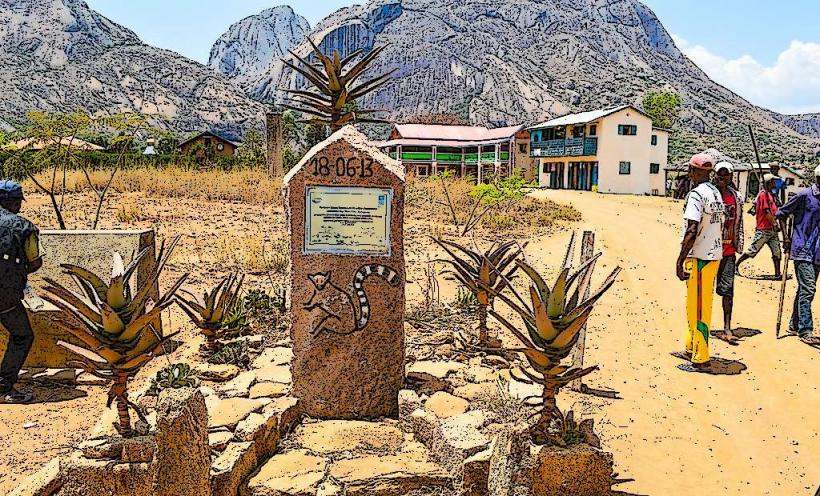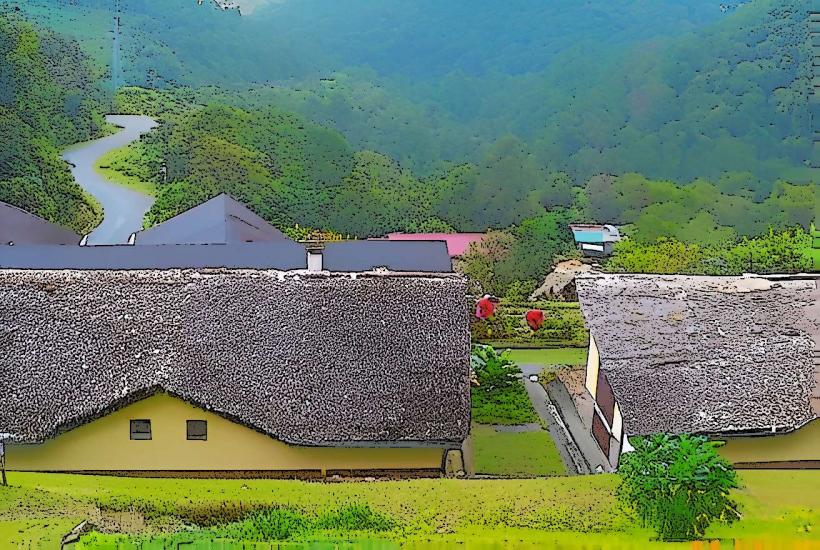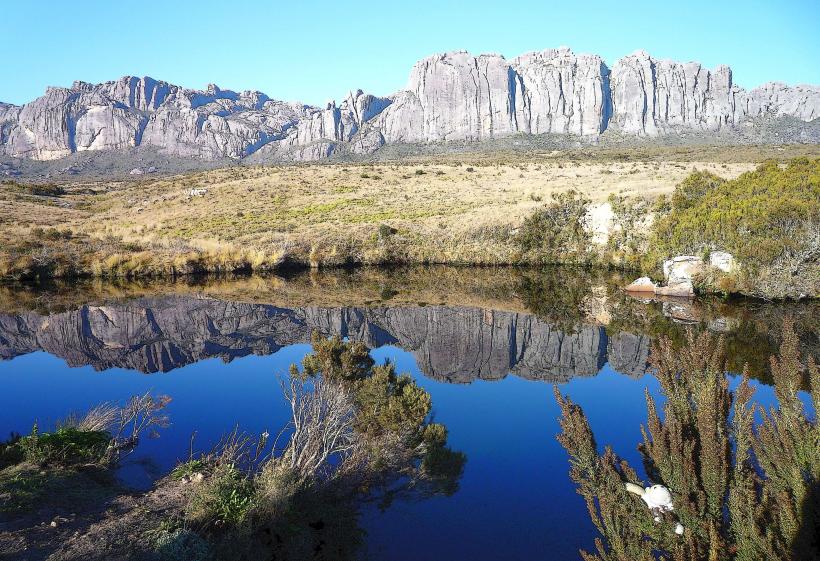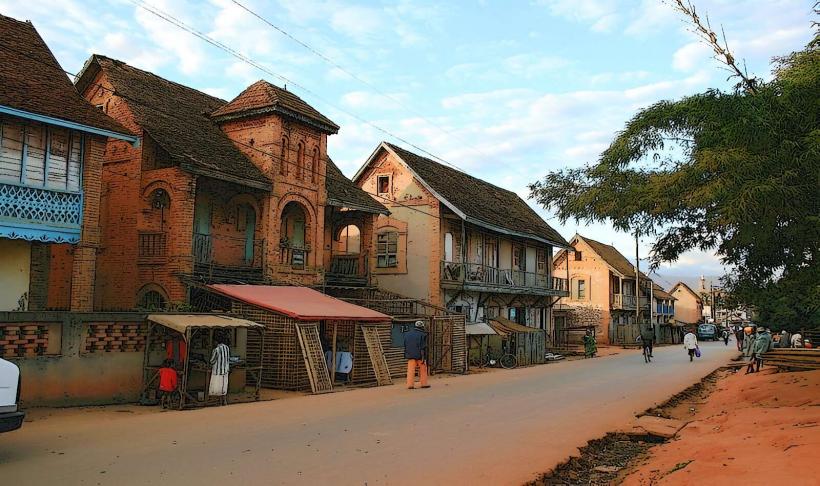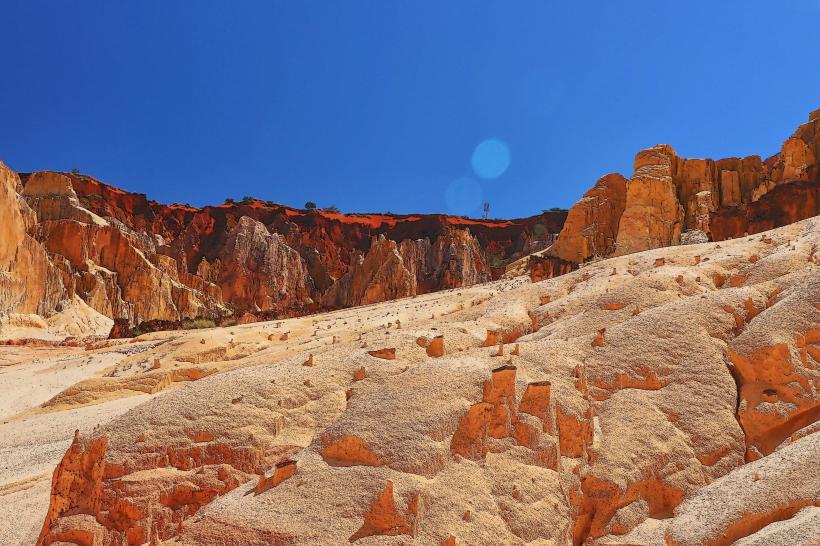Information
Landmark: Fiherenana RiverCity: Ambalavao
Country: Madagascar
Continent: Africa
The Fiherenana River is one of the prominent rivers in the southwestern region of Madagascar, flowing through the Atsimo-Andrefana region, particularly in the Toliara area. It is known for its importance to both the local communities and the environment, providing essential water resources for agriculture, fishing, and other human activities. The river also plays a vital role in shaping the landscape and ecosystems of the region.
Overview and Geography
Source and Course: The Fiherenana River originates in the Androy Plateau, located to the east of the river's course. It flows through the dry forests and savannas of southwestern Madagascar, eventually draining into the Mozambique Channel near the city of Toliara (also called Tuléar). The river stretches over a significant distance, with some sources estimating its length at around 300 kilometers (approximately 186 miles), making it one of the larger rivers in the region.
Tributaries: The Fiherenana River is fed by numerous smaller tributaries, many of which originate from the mountains and plateaus in the surrounding regions. These contribute to its flow, especially during the rainy season.
Importance of the Fiherenana River
Water Supply: The Fiherenana River serves as a critical water source for the towns and villages along its banks. In a region that is often affected by periods of drought and water scarcity, the river provides essential water for drinking, irrigation, and domestic use. It supports local agriculture, which is primarily based on subsistence farming.
Agriculture: The fertile land along the Fiherenana River has been used for farming for generations. The river’s water is crucial for irrigation, enabling the cultivation of crops such as rice, cassava, maize, and various fruits and vegetables. The river’s flooding during the wet season also helps to replenish soil nutrients, benefiting agricultural production.
Fishing: The Fiherenana River supports a variety of aquatic species, including fish that are essential for local communities. Fishing is an important activity for many people living along the river, providing food and a source of income. Fish and other aquatic life in the river help sustain local diets and trade.
Ecological Role: The Fiherenana River flows through several unique ecosystems, including areas of wetland, riverine forests, and savannah. It is home to a variety of plant and animal species, many of which are endemic to Madagascar. The river and its surrounding habitats support wildlife such as waterbirds, reptiles, and amphibians.
Environmental Challenges
Like many rivers in Madagascar, the Fiherenana River faces various environmental challenges:
Deforestation: The surrounding areas, particularly the hills and plateaus, have experienced significant deforestation due to agricultural expansion and the collection of wood for fuel. Deforestation can lead to soil erosion, which impacts the river's water quality and flow.
Pollution: As with many rivers, the Fiherenana faces pollution from domestic waste, agricultural runoff, and sometimes mining activities. This can negatively impact water quality and harm the aquatic ecosystem.
Climate Change: The impacts of climate change, including changes in rainfall patterns, may affect the river's flow. Periods of severe drought followed by intense rainfall can alter the river’s seasonal flow and lead to issues such as flooding or water scarcity.
Role in Local Culture and Economy
The Fiherenana River plays a key role in the daily lives of the people who live along its banks. Many local communities depend on the river not only for water and food but also for transportation. The river is used for transporting goods and people, especially in more remote areas where roads may be inaccessible or difficult to navigate.
Cultural Practices: The river has cultural significance for the local Malagasy people, with various traditions and ceremonies related to water and the river. It is often associated with local beliefs, and certain sections of the river may be considered sacred.
Tourism: Although not as famous as some of Madagascar’s other natural landmarks, the Fiherenana River has potential for eco-tourism, especially for visitors interested in exploring the rural landscapes, local culture, and biodiversity of the southwestern region. River tours and trekking in the surrounding areas can provide tourists with an opportunity to experience the natural beauty and tranquility of the river.
Conclusion
The Fiherenana River is a vital natural resource in southwestern Madagascar, supporting local agriculture, fishing, and daily life for the communities along its course. Its ecological importance cannot be overstated, as it provides water, sustenance, and livelihood opportunities for the region. However, it also faces challenges such as deforestation, pollution, and the impacts of climate change. Ensuring the sustainable management of the river and its surrounding ecosystems is critical for the long-term well-being of the local people and the biodiversity of the area.

